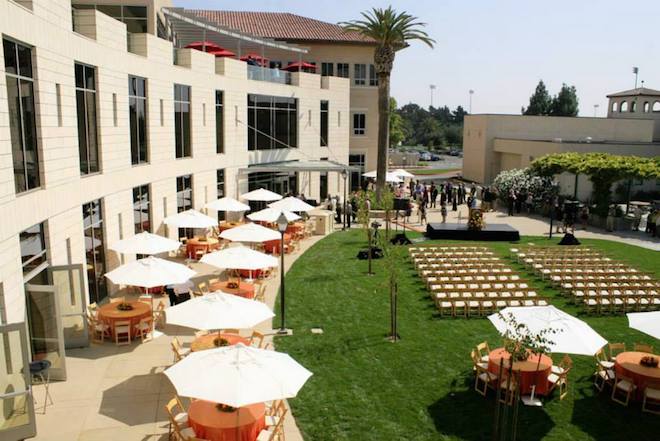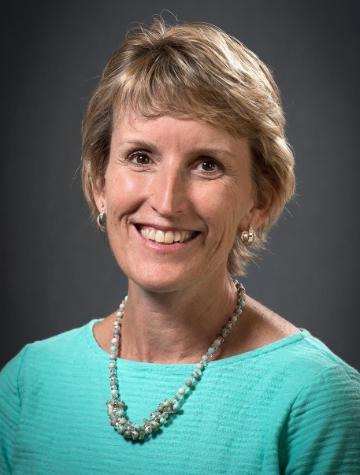
Santa Clara University. Courtesy photo
The business world has shifted towards a more competitive nature.
At Santa Clara University’s Leavey School of Business, a number of changes are being implemented to help prepare students for new business demands.
Most notably, Leavey’s Dean, Caryn Beck-Dudley has made it a mission to create stronger and more purposeful connections with industry experts on current trends and demands in the workforce.
“In her time at the Leavey School of Business, Dean Caryn Beck-Dudley has met with over 600 business leaders and alumni and attended nearly 200 events to cultivate our relationships and understand industry needs,” Jo-Anne Shibles, senior assistant dean of the undergraduate business programs at Leavey, says.
As a B-school located in the heart of the Silicon Valley, Leavey has access to valuable connections in an ever-growing world of technological demands.
“Our location in the Silicon Valley provides the unique ability to experience, learn from, and work in one of the most innovative areas of the world,” Shibles explains.
See the below interview with Jo-Anne Shibles on changes in the business education landscape, how Leavey is addressing new business demands and advice for prospective b-school applicants.

Jo-Anne Shibles is the Senior Assistant Dean of Undergraduate Business Programs at the Leavey School of Business. Courtesy photo
What are some of the biggest changes you have seen in undergraduate business education during your time at Leavey?
JS: There are several pronounced changes which have occurred over the last 10-15 years at Santa Clara. First is the tremendous popularity of the business degree. The Leavey School enjoys a strong applicant pool each year and a competitive acceptance rate with the other schools within the university. This trend in business school popularity is certainly not exclusive to SCU, but also present at institutions across the country.
Secondly, since we are located directly in the middle of Silicon Valley, our commitment to entrepreneurial endeavors and innovative teaching, learning, and research has clearly increased as startups and companies have influenced the way we both think and do work. We work with our undergraduates who have started companies to provide support and appropriate connections.
Third, as our Dean Caryn Beck-Dudley shares, a business education needs to focus on innovation, adaptation, and the importance of teaching students to “reinvent yourself” every 3-5 years. Historically, students would join the university, obtain their degree and move into a profession that would last for many years. Today we find our undergraduate students interested and asking for internship opportunities earlier in their academic careers. Whereas 10 to 15 years ago students were involved in one internship (generally done between the junior and senior year), currently it is more common to have students involved in several internships over the course of their academic career — sometimes even after their first year with us. This drive to excel and achieve is certainly a signature of a generation striving to make their mark in the world.
What are some ways these changes are influencing the curriculum and business education at Leavey?
JS: Our faculty have worked to implement several new curricula such as a new business analytics minor and four plus one masters in business analytics. In addition, we have developed a new real estate program leveraging our faculty and local expertise resulting in over 200 undergraduates involved.
Most recently, we have implemented several cutting-edge programs and curricula to support student learning and development. Examples of these are: Initiative for Women’s Economic Empowerment and our Conscientious Capitalism curriculum for undergraduates.
The Initiative for Women’s Economic Empowerment, IWEE, is a joint initiative between the Leavey School of Business and SCU’s Miller Center for Social Entrepreneurship that will accelerate economic empowerment of women leaders in Silicon Valley, STEM disciplines, and in the developing world as social entrepreneurs. This is done through convening, connecting and mentoring women.
The Conscientious Capitalism Initiative features case studies and lectures by former CEOs and executive leaders. The goal of this initiative is to give students the tools and frameworks for applying virtue and purpose to their personal development and growth as business leaders.
What advice do you have for high school students and their parents that are interested in studying business in college?
JS: There are four pieces of advice I would share with students.
First, be sure that the business program you are considering is accredited by the Association to Advance Collegiate Schools of Business (AACSB). This ensures a strong curriculum, faculty, and learning outcomes.
Second, take some time to review the curriculum, faculty research, and career placement rates. Each of these areas provides insight into the focus and outcomes of the curriculum as well as the particular research interests of the faculty. The career placement indicates the success by which students obtain jobs usually three to six months after commencement. These figures should be strong.
Third, review and ask about how undergraduate students can connect with alumni around internships, career preparation, and job search. A strong alumni network is invaluable to starting a student’s professional career.
Finally, be sure to apply directly to the business school or program. Transferring into a business program once you enter a university can be extremely competitive.
How do you think the B-school student has changed during your time in business education?
JS: First, the impact of social media. Students are clearly more connected as they join the university, while on campus, and the years after graduation. A Pew research study shares 90% of young adults use social media, compared with 12% in 2005. This is a huge shift in how students gather and use information during their collegiate years.
Secondly, ten to 15 years ago, we educated and trained students for standard jobs and work environments. In other words, account manager, human resources or sales representative, and business operation specialist would be job titles of the past. Today, we work to provide students with a skill set that provides both foundational knowledge to succeed in business but also the ability to pivot or use these skills in different ways as they move through their career. And the need for this can be seen in today’s job titles: market research data miner, search engine optimization (SEO) specialist, sustainability manager, big data analyst, cloud computing specialist, and social media manager.
Third, internships earlier and more often. Ten years ago, our Career Center did not hold a career and internship fair for first year and sophomore students. Ten years ago, we did not interact with incoming first year students who may have already held one to two internships while in high school. The prevalence and desire to intern earlier and more often is clearly driven by this achievement-driven group of students.
DON’T MISS: CITIES WITH THE MOST COLLEGE EDUCATED MILLENNIALS or WHY THESE SCHOOLS ARE TRYING TO ELBOW THEIR WAY INTO SILICON VALLEY











Questions about this article? Email us or leave a comment below.